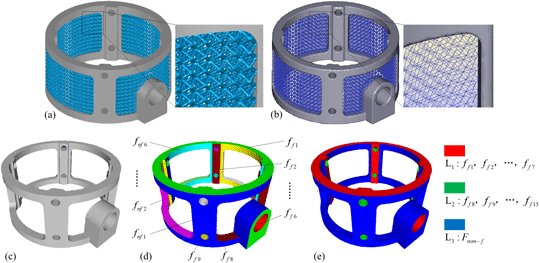Article contents
Build orientation optimization for lightweight lattice parts production in selective laser melting by using a multicriteria genetic algorithm
Published online by Cambridge University Press: 03 June 2020
Abstract

Additive manufacturing has enabled the development of lightweight lattice structures, which are widely used in orthopedic implant, aerospace and filtration fields. The traditional method of optimizing part build orientation has been unable to meet the demand for lightweight lattice parts. This paper proposes a novel method to obtain an optimum build orientation for lightweight lattice parts based on selective laser melting by considering two factors at a time, namely processability of lattice structures and the surface quality of functional features. First, the overhang structure area model for the evaluation of the processability of lattice structures is established; then, mesh segmentation and feature level classification of the lightweight part frame are carried out. On this basis, the adaptive feature roughness model for the evaluation of the surface quality of functional features is established; finally, a multicriteria genetic algorithm is used to solve the build orientation optimization problem of lightweight lattice parts to obtain a Pareto optimal set.
- Type
- Article
- Information
- Journal of Materials Research , Volume 35 , Issue 15: Focus Issue: Additive Manufacturing of Metals: Complex Microstructures and Architecture Design , 14 August 2020 , pp. 2046 - 2054
- Copyright
- Copyright © Materials Research Society 2020
References
- 7
- Cited by



